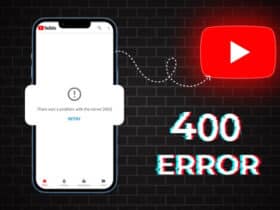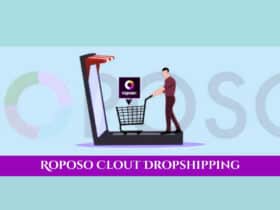The world is becoming increasingly interconnected, and video content reigns as one of the most powerful tools for storytelling and engagement. By 2025, it’s estimated that video will make up 85% of all internet traffic. For content creators looking to expand their reach and grow their audience, the stakes have never been higher.
But what’s the key to succeeding in a global market with billions of potential viewers? The answer lies in online video translators. These tools break down linguistic and cultural barriers, ensuring that your videos can connect with audiences across the world.
This blog will explore the rising importance of video translation, its benefits, steps to choosing the right tool, and look forward to the future of this vital technology.
Understanding Your Audience
If you’re a content creator, your audience is your lifeline. But audiences today are not confined within specific language or geographic boundaries. People from all over the world consume video content in a variety of languages, and creators who fail to adapt risk losing relevance on a global scale.
Why Global Reach Matters
- Expanding audience size: Translating videos maximizes your reach, helping you connect with millions who speak different languages. For example, adding Spanish subtitles could open your content to over 500 million speakers worldwide.
- Culturally relevant messaging: Localization can help you tailor your content, making it resonate more deeply with diverse cultural contexts. This creates a stronger connection with viewers and keeps them engaged.
By adding a multilingual dimension to your videos, you not only increase accessibility but also boost your chances of success in untapped markets.
Benefits of Using an Online Video Translator
Curious about why online video translators are a must-have? Here are the top advantages they bring to content creators:
1. Expand Your Reach Beyond Language Barriers
An online video translator enables your content to reach viewers who might otherwise skip over it due to language limitations. For example, one Korean YouTuber reported doubling her subscribers after translating her videos into English and Japanese.
2. Enhance Accessibility
For viewers with disabilities, translations that include subtitles or audio dubbing make content consumption much easier. Closed captions in different languages also improve video accessibility for the hearing impaired.
3. Boost Your SEO Performance
Search engines index subtitle content in videos, increasing their visibility in multilingual search queries. For example, when you use translated subtitles, you can target keywords in multiple languages, potentially improving your ranking in foreign search results.
4. Increase Viewer Engagement
People are far more likely to watch videos in their native language. A study from the European Commission found that 90% of users prefer websites in their own language, and this preference translates into video content as well.
5. Gain a Competitive Edge
With the increasing competition in the creator economy, offering translated content can set you apart from others. By catering to global audiences, you demonstrate professionalism and gain a distinctive edge in the market.
6. Maximize Return on Investment
Video translation is a cost-effective way to repurpose existing content for different regions, without having to produce new material. A single video with multiple translations can generate returns from an expanded audience base.
How to Choose the Right Video Translator

With so many tools on the market, selecting the right online video translator can feel overwhelming. Here are some criteria to keep in mind:
1. Language Support
Ensure the tool supports all the languages you need. A feature-rich platform like DeepBrain’s AI Studios supports over 110 languages, making it a versatile choice for creators with diverse audience bases.
2. Ease of Use
The tool you choose should be intuitive and beginner-friendly. Look for drag-and-drop editors, automatic syncing capabilities, and customizable visuals.
3. Features
Does the platform provide both subtitles and dubbing? Can it translate on-screen text or localize graphics? Advanced platforms also offer lip-syncing features to make dubbed audio match mouth movements.
4. Affordability
Pricing structures vary widely across services. Some charge per video, while others offer flat-rate subscriptions. For creators on a budget, free trials or freemium plans are a great way to test before committing.
5. Scalability
As your audience grows, so will your needs. A reliable video translator should be robust enough to handle increasing demands, including translating lengthy videos or supporting integration into larger workflows.
Case Studies Success Stories of Content Creators Using Video Translation
Real-life examples shine a light on just how transformative video translation can be. Here’s how creators across industries have benefited:
1. Educational Content
An online language educator translated her tutorials into French, German, and Spanish, resulting in a 65% increase in course sales within six months. Her ability to cater to non-English speakers made her offerings accessible globally. With the help of modern tools like a UGC creator, she could also promote her content more effectively to diverse audiences.
2. Entertainment
A gaming streamer incorporated multilingual subtitles into his Let’s Play series. By translating his videos into Mandarin and Portuguese, he grew his channel’s viewership in China and Brazil, doubling ad revenue.
3. Fitness
A fitness influencer translated her workout videos into Italian and Arabic, allowing her to tap into European and Middle Eastern markets. Her subscription-based app saw a 40% rise in members when she localized her promotional videos.
These success stories highlight one thing to keep in mind: the opportunities unlocked by online video translators are immense, regardless of your niche.
Looking Ahead The Future of Video Translation in 2025
The demand for multilingual content shows no sign of slowing down. Here are some emerging trends and technological advancements to watch in the video translation space:
1. Improved AI-Powered Translation
With advancements in AI, online video translators are becoming more accurate and context-aware. This means fewer errors in subtitling and more natural-sounding dubbing.
2. Real-Time Translation
Tools that offer live subtitle generation during streamed video content will reduce delays, helping creators engage with global audiences during interactive sessions.
3. Cultural Adaptation
Future translation tools might not only localize language but also adapt visuals, content structure, and metadata for specific audiences. For example, a scene in a marketing video could change imagery and music based on the viewer’s region.
4. Integration into Social Media Platforms
Imagine an Instagram or YouTube integration that auto-translates your videos directly within the platform, opening new frontiers for content distribution.
Content creators who adopt video translation technologies now will maintain relevance, engage audiences effectively, and stay ahead of the curve.
Now is the Moment to Harness Video Translation
Video translation is no longer a luxury for creators, it’s a necessity in 2025. If you want to improve accessibility, multiply engagement, and connect with audiences worldwide, an online video translator is the tool your content strategy needs.
Take the first step towards global content success today by exploring platforms like DeepBrain AI Studios, which combine translation, dubbing, and advanced AI tools for seamless worldwide connectivity.
Related: Top 5 AI Video Enhancers to Improve Video Quality: Pros & Cons


















Active Noon Media is the largest local to national digital media website that represents the voice of the entire nation.